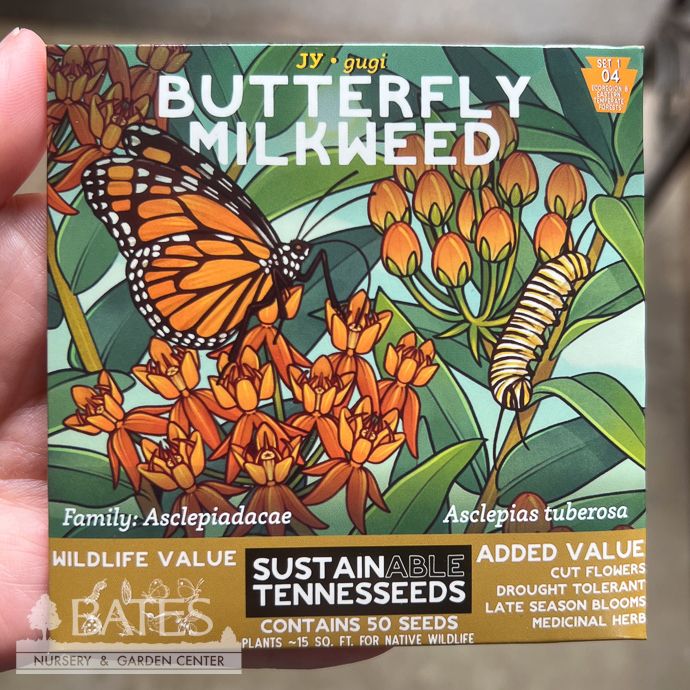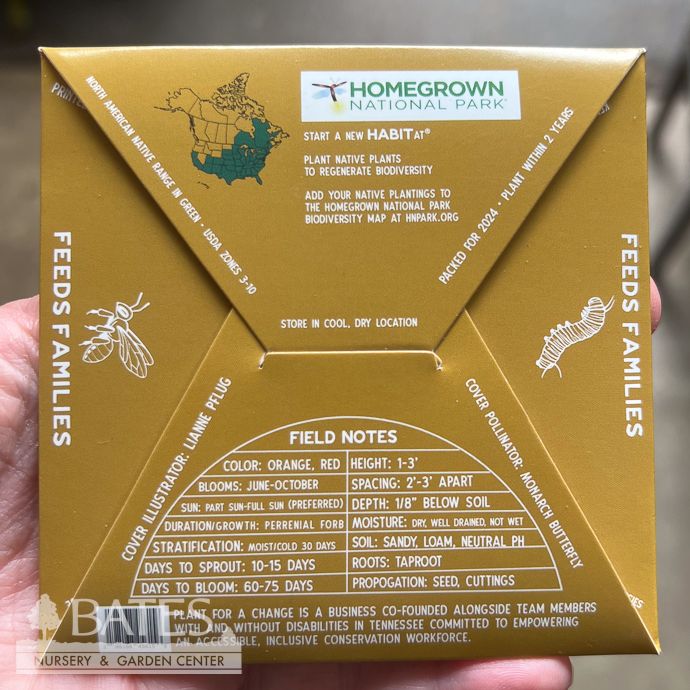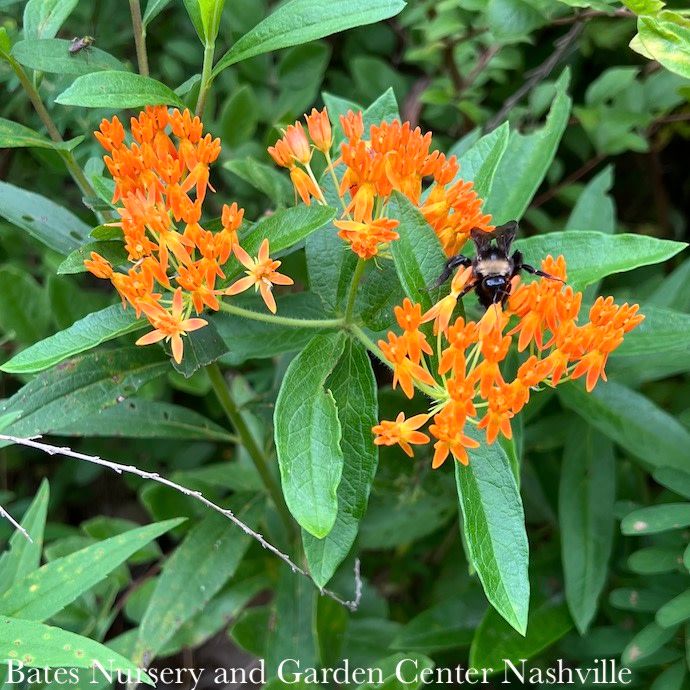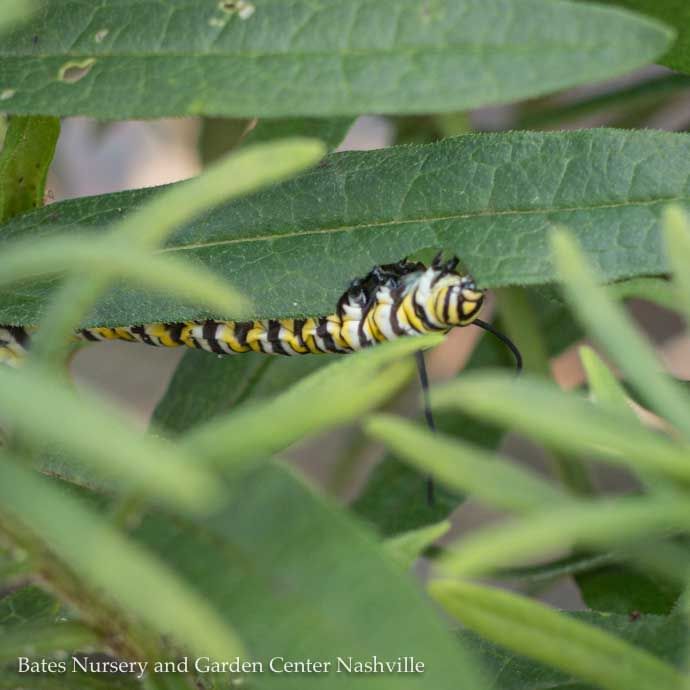Seed Butterfly Milkweed /Asclepias tuberosa - SustainAble TennesSeeds - Plant for a Change Native (TN)
Seed Butterfly Milkweed /Asclepias tuberosa - SustainAble TennesSeeds - Plant for a Change Native (TN)
SCIENTIFIC NAME: Asclepias tuberosa
COMMON NAME: Butterfly Weed
GARDEN SIZE: 1–2.5' tall x 1–1.5' wide
GROWTH RATE: Slow to establish, moderate thereafter
USDA ZONE: 3–9
EXPOSURE: Full Sun
WATER & SOIL: Prefers dry to medium moisture, well-drained soil. Tolerates poor, rocky, or shallow soils and drought. Avoid wet or poorly drained locations.
HABIT (FORM): Clump-forming perennial with upright to reclining hairy stems; deep taproot
FOLIAGE: Narrow, lance-shaped, dark green leaves; arranged alternately along the stem; lacks milky sap
FLOWERS: Showy, bright yellow-orange to orange umbels bloom June–August; long blooming season
FRUIT: Prominent, spindle-shaped seed pods (3–6") split open when ripe to release silky-tailed seeds; useful in dried arrangements
PLANT ORIGIN: Native to Tennessee
WILDLIFE SUPPORT: Sole host plant for the monarch butterfly. Feeds native bees, moths, and butterflies. Attracts beneficial insects and hummingbirds.
FERTILIZING: Give a root stimulant or 4-3-3 fertilizer during initial planting, then feed lightly in late winter or early spring with compost or an organic fertilizer. Never use pesticides.
PRUNING: Cut back to just above soil level in early spring. Leave the seedheads in place over the fall and winter to support wildlife.
TOXICITY FLAGS: Toxic to dogs, cats, and horses. Not considered edible for humans. The white latex sap can also irritate the skin and eyes if touched.
USES: Meadows, prairies, pollinator gardens.
